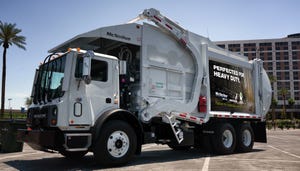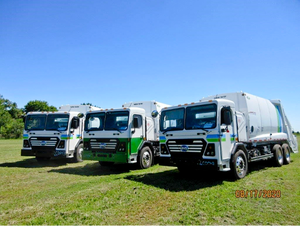Less Than Meets the Eye
American recycling companies employ more than a million people, pay them more than $37 billion a year and have annual revenues equal to the auto and truck manufacturing industries. Recycling is a big business if these numbers, which are the results of the Environmental Protection Agency's (EPA) and the National Recycling Coalition's (NRC) recently released U.S. Recycling Economic Information Study, are accurate.
Unfortunately, the numbers are the result of flawed methodology that includes virtually all recyclables, regardless of origin, and makes generous job creation assumptions. The study creates a larger recycling universe by defining recycling to include the can placed at the curbside and the cansheet leftover at the manufacturing plant.
The report divides the recycling industry into two categories: businesses that “undertake some recycling or reuse activities,” and those that are “100 percent recycling or reuse-dependent (no virgin material).” Glass container plants that use cullet (recycled glass) in the raw material mix, but primarily use virgin raw materials, are an example of the “some recycling” category.
The “100 percent recycling” category includes some obvious industries, such as collecting and processing recyclables. Also, it encompasses industries that do not use virgin raw materials, such as recycled paperboard plants and steel mini-mills. “No virgin materials” should mean just that. After all, you can't be partially virgin.
Yet, the “100 percent recycling” category also includes basic oxygen furnaces. These steel mills cannot use more than 30 percent scrap and generally do not use many, if any, used cans. Nonetheless, they are included in the “no virgin materials, recycling dependent” category because they need some scrap in the mix.
Also, the study makes liberal assumptions about recycling-related jobs. In the glass container industry, 90 percent of the jobs and revenues are credited to recycling. Not bad for an industry that uses approximately 25 percent recycled content. In the steel industry, 100 percent of the jobs at basic oxygen furnaces are credited to recycling.
Do these mistakes matter? I think so, especially because EPA, NRC and environmental groups insist that attempts to create markets for secondary materials focus on post-consumer recyclables. They have argued that legislation and regulations should promote post-consumer recyclables because industrial scrap has always been recycled. Then, they have filed lawsuits and fought legislative battles so that government procurement standards would give preference to post-consumer recycled content. Environmentalists have demanded that product labels distinguish between industrial and post-consumer recyclable content.
Industrial vs. post-consumer may be an irrelevant distinction in the long-run, but a little consistency is good. The report rightfully recognizes industrial scrap's role in recycling and recycling's economic contribution. But a flawed methodology and inflated numbers mean that EPA and NRC need to go back to the recycling board and redo their report.
Opinions in this column do not necessarily reflect the National Solid Wastes Management Association or the Environmental Industry Associations. E-mail the author at: [email protected].
The columnist is director, state programs for the Environmental Industry Associations, Washington, D.C.
About the Author(s)
You May Also Like




